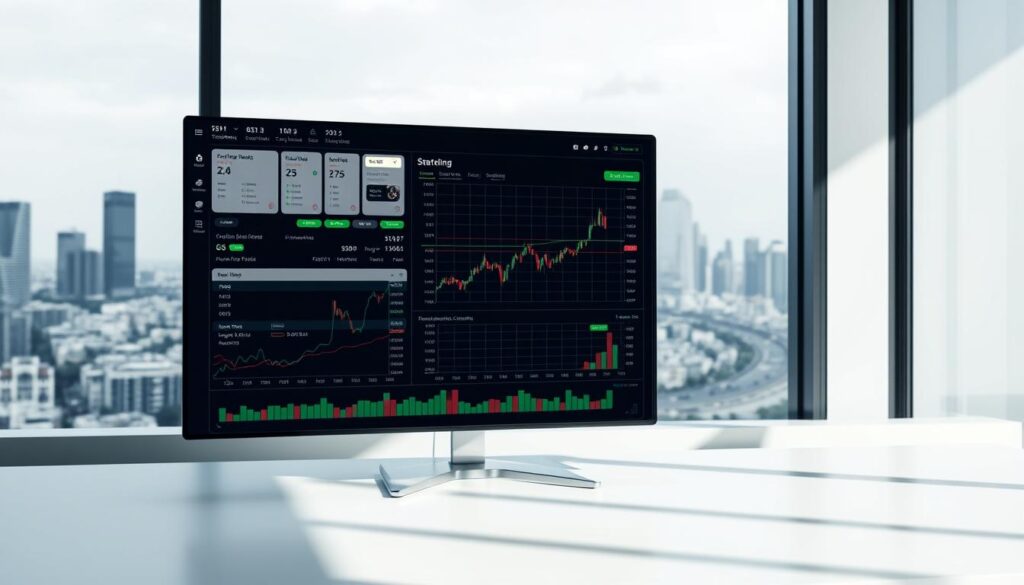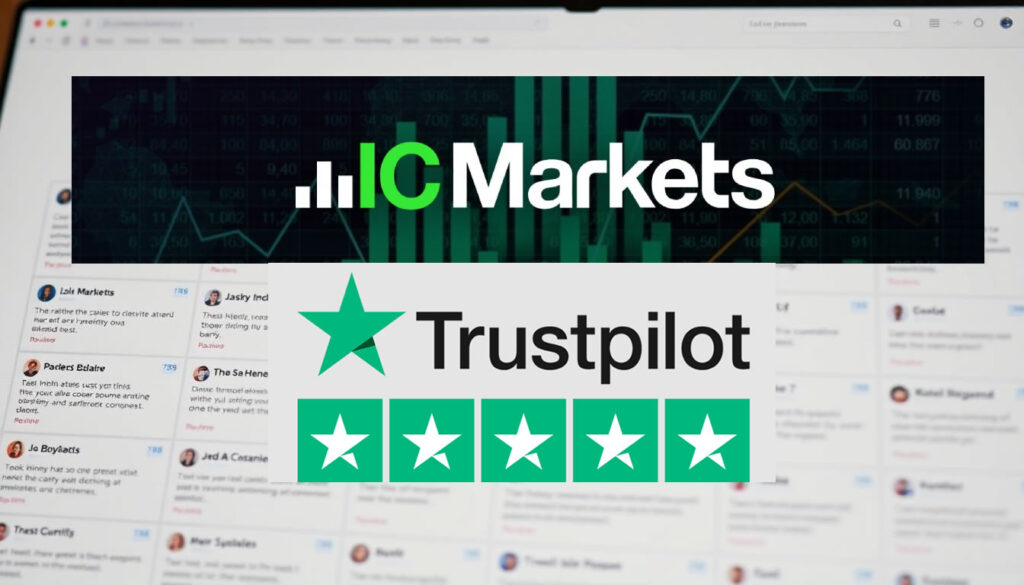The financial landscape is evolving, and established brokers are adapting. One major player has entered the proprietary trading arena with a fresh approach. Their new platform, currently in beta testing, offers traders a chance to access larger capital pools through structured challenges.
Known primarily for forex and CFD services, this broker’s expansion into funded accounts signals a strategic shift. The program requires participants to demonstrate consistent performance before granting access to company funds. While the concept isn’t new, the credibility of the parent organization adds weight to its potential.
Early adopters face both opportunities and unknowns. Limited user feedback exists due to the platform’s trial phase. Traders must weigh the appeal of increased capital against the uncertainties of untested systems. This guide explores what makes this initiative stand out in a crowded market.
For experienced traders seeking alternatives to traditional brokerage models, this development warrants attention. The coming sections break down eligibility requirements, profit structures, and risk management protocols. Understanding these elements helps determine if this program aligns with individual trading goals.
Overview of Prop Trading and IC Markets’ Venture
In the competitive world of finance, accessing external capital has become a game-changer for skilled traders. Prop trading allows individuals to manage company funds through brokers instead of risking personal savings. This model benefits both parties: traders gain leverage, while institutions share profits from successful strategies.
What is Proprietary Trading?
Proprietary trading involves financial institutions providing capital to selected traders. Unlike traditional retail setups, participants don’t use their own money. They undergo evaluation phases to prove consistency and risk management skills.
This approach creates partnerships where skill meets resources. Companies mitigate risk through phased assessments, while traders access tools typically reserved for institutional players. Key features include:
- Profit-sharing agreements between traders and prop firms
- Structured challenges to assess trading discipline
- Access to advanced analytics and larger capital pools
IC Markets’ Reputation and Background
A trusted name in forex brokerage has expanded into this arena. With years of regulatory compliance and technological infrastructure, they provide a stable platform for funded accounts. Their established reputation reduces concerns about operational reliability common in newer ventures.
Deep Dive into the ic markets prop firm Program

Innovative funding models are reshaping how traders access capital. The beta testing phase of this initiative introduces both possibilities and uncertainties. Participants engage with a work-in-progress platform, where adaptability becomes as crucial as trading skill.
Beta Testing Status and Its Implications
The program operates under a soft launch, meaning features could evolve before full release. Technical hiccups may occur, from delayed order execution to temporary dashboard errors. Early users essentially become co-developers, shaping tools through real-world feedback.
Three critical considerations emerge during this phase:
- Platform stability varies as developers refine risk management algorithms
- Trading rules might adjust based on participant behavior analysis
- Support response times could lag during stress-test periods
Unique Features That Stand Out
This initiative distinguishes itself through progressive scaling. Successful traders unlock higher capital tiers without restarting evaluations. The system also incorporates social trading metrics, allowing participants to benchmark against peers.
Another innovation involves dynamic drawdown limits. Unlike rigid industry standards, thresholds adapt to market volatility. This flexibility helps skilled traders navigate turbulent conditions while protecting company funds.
Understanding the Prop Trading Model

Skilled traders seeking growth opportunities often explore partnerships where expertise meets institutional resources. The prop trading model removes personal financial exposure by letting participants trade with third-party capital. This approach creates accountability through structured evaluations before granting access to larger accounts.
Two-phase assessments form the core of this system. First, traders must hit specific profit targets under simulated conditions. Second, they demonstrate consistency while adhering to strict risk parameters. Successful candidates then manage live accounts without upfront investments.
Key components define this collaborative framework:
- Predefined drawdown limits that adjust to market volatility
- Transparent profit-sharing agreements between parties
- Real-time performance tracking through advanced dashboards
Risk management rules protect both capital providers and traders. These include daily loss thresholds and position size caps. Such safeguards ensure strategies align with long-term profitability goals rather than reckless speculation.
Through this model, trading firms identify talent while traders gain leverage beyond personal means. It transforms individual skill into scalable market participation, fostering professional growth through shared success incentives.
Evaluating Benefits and Potential Drawbacks

Participating in funded trading programs involves balancing rewards with inherent risks. While access to institutional capital amplifies opportunities, understanding the fine print separates sustainable success from short-lived gains.
Profit Sharing and Access to Firm Capital
The program’s 80% profit split attracts skilled individuals seeking scalable earnings. Traders utilize company funds with 1:50 leverage across forex, commodities, and indices. This setup removes personal financial exposure while enabling diversified strategies.
Key advantages include:
- No upfront capital requirements
- 150+ instruments for portfolio balancing
- Real-time performance analytics
Regulatory and Operational Concerns
Proprietary trading operates in a regulatory grey area across multiple jurisdictions. Tax obligations and compliance standards vary, requiring participants to consult financial advisors. Retail traders face additional scrutiny regarding fund protection measures.
Operational challenges during beta testing include:
- Potential withdrawal delays
- Unpredictable platform updates
- Limited dispute resolution channels
This regulatory uncertainty underscores the need for thorough due diligence. Traders must verify licensing details and read contractual terms carefully before committing capital or strategies.
Navigating the Beta Phase and Technical Considerations

Exploring beta programs requires balancing innovation with practical realities. Early-stage platforms often combine cutting-edge tools with evolving rulesets. Participants become active contributors to system improvements while managing unfinished features.
Challenges with Beta Testing
Limited transparency creates hurdles during initial participation. Key program elements like fee structures remain undefined until official launch. Three primary issues emerge for testers:
- Frequent platform updates disrupting workflow continuity
- Unverified order execution speeds during peak volatility
- Incomplete documentation for advanced charting tools
Technical limitations may affect strategy implementation. Some users report delayed price alerts and temporary API disconnections. These growing pains demand adaptability from participants.
Opportunities for Early Adopters
Beta testers gain unique advantages despite operational uncertainties. Their feedback directly shapes platform development, creating tailored solutions. Proactive contributors often secure benefits like:
- Priority access to full-program features
- Enhanced profit-sharing ratios post-launch
- Customizable risk management parameters
Early exposure helps traders master proprietary tools before public release. Staying connected through official channels ensures timely updates about phased improvements. This collaborative approach rewards patience with strategic advantages.
Examining the Account Evaluation and Trading Process

Mastering funded programs starts with understanding structured evaluations. Traders must prove their skills through systematic assessments before accessing company capital. This process separates disciplined strategists from impulsive market participants.
Step-by-Step Evaluation Phases
The journey begins by selecting an account size matching one’s risk appetite. Phase one tests profitability in simulated conditions mirroring live markets. Participants must hit profit targets while respecting drawdown limits and daily loss thresholds.
Successful traders advance to phase two, focusing on consistency. This stage verifies whether results stem from skill rather than luck. Strict trading rules apply, including position size caps and restricted instruments.
Risk Management and Trading Rules
Capital protection drives all operational guidelines. Key safeguards include:
- Maximum 5% daily loss limits
- Overall 10% drawdown restrictions
- Prohibited news trading during high volatility
Forex trading dominates permitted instruments, though indices and commodities get included. Overnight positions require specific approvals, encouraging disciplined approaches. These rules ensure participants develop sustainable strategies rather than chasing quick wins.
The system evaluates more than profits. Consistency scores and risk-reward ratios determine long-term suitability. This comprehensive approach creates reliable partnerships between skilled traders and capital providers.
Industry Insights: Social Media and Event Updates
Staying informed in fast-paced markets requires leveraging modern communication channels. Industry events and digital platforms now shape how traders access critical updates and strategic shifts.
Key Takeaways from Recent FMAS Roundtables
The FMAS:25 Leaders Roundtable revealed evolving priorities among brokers. Regulatory adjustments and client targeting strategies dominated discussions. Executives like Paul Margarites of Exness highlighted the push toward serving experienced traders while exploring new asset classes.
Three trends emerged from the summit:
- Increased focus on compliance frameworks amid changing rules
- Development of hybrid products blending traditional and crypto assets
- Strategic partnerships to enhance global market access
Staying Updated with Market News and Media Trends
Social media platforms have become indispensable for real-time information. Traders following verified accounts gain insights into platform upgrades and regulatory alerts. LinkedIn and Twitter prove particularly valuable for industry-specific analysis.
Essential channels include:
- YouTube for webinar replays and strategy breakdowns
- Instagram for visual summaries of market shifts
- TikTok for bite-sized trading tips from experts
Engaging with these resources helps traders anticipate changes affecting funded programs. Regular participation in online communities also fosters networking opportunities with peers and analysts.
Comparing IC Markets’ Offerings with Other Prop Trading Firms

Selecting the right funding partner shapes trading success in competitive markets. Established programs like FTMO and MyForexFunds dominate this space, while newer entrants leverage broker reputations to attract talent. Traders must weigh program maturity against potential growth opportunities.
Alternative Programs: FTMO, MyForexFunds, and Earn2Trade
Three industry leaders set benchmarks for funded accounts. FTMO offers 90% profit splits with $400,000 maximum allocations. MyForexFunds provides flexible evaluation periods, while Earn2Trade focuses on futures markets. Key differences include:
- Upfront evaluation fees ranging from £150 to £600
- Profit share percentages between 70%-90%
- Weekly vs monthly withdrawal options
These companies maintain transparent trading rules and dedicated support teams. Their track records appeal to retail traders prioritizing stability over experimentation.
Considerations for Choosing the Right Partner
Platform selection hinges on four critical factors:
- Regulatory standing: Verify FCA registrations or equivalent protections
- Withdrawal reliability: Check processing times and fee structures
- Tool integration: Assess platform compatibility with preferred strategies
- Growth potential: Compare scaling options post-evaluation
Newer entrants might offer competitive terms but lack proven payout histories. Seasoned traders often prefer programs with verifiable awards and third-party audits. Balancing risk tolerance with ambition determines the optimal path forward.
Closing Thoughts for Aspiring Traders
Navigating funded trading programs demands careful strategy. While new initiatives offer access to a reputable broker’s infrastructure, beta-phase participation carries unique risks. Early adopters might gain preferential terms, but platform stability and rule changes remain concerns.
Seasoned traders should compare multiple options before committing. Established programs provide predictable conditions, while emerging alternatives could deliver competitive advantages post-launch. Regular monitoring of official updates through newsletters or social channels helps track developments.
Success ultimately hinges on two factors: consistent profitability and disciplined risk management. Whether exploring forex or other instruments, mastering these skills proves vital across all platforms. Programs reward those who treat trading as a profession rather than speculation.
Before joining any initiative, verify withdrawal processes and contractual terms. Building expertise through demo accounts or smaller evaluations often yields better long-term results than chasing untested opportunities. The right choice balances ambition with operational reliability.



